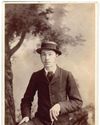
In regular photography, shallow depth of field is often a valuable creative effect. Portrait photographers use it to blur backgrounds but keep their subjects sharp, for example. But in macro and close-up photography, depth of field can be a problem, simply because you can't get enough of it.
At very close focusing distances, the depth of field becomes progressively more shallow, so it becomes difficult to keep the full 3D shape of an object sharp, even at a small lens aperture. You can focus on the front, you can focus on the back, but you can't get them both sharp at the same time.
This is where 'focus stacking' comes in. This is a technique used widely by macro photographers where you take a whole sequence of identical shots of your subject, but with the focus shifted slightly each time. The aim is to get a sequence of shots where every part of your subject is sharp in one of these shots.
This stage is 'focus bracketing'. Many cameras have a focus bracketing mode built in, including the Canon EOS R8 used for this image. With the EOS R8, you choose the number of shots you want to take and the focus shift for each one, and the camera captures the sequence automatically.
'Focus stacking' is the phase where you merge these images together, and while some cameras can do it for you, the results will generally be better if you merge your focus brackets in software.
Now Photoshop does have a Photo Merge feature for merging HDR images and panoramic shots, but where's its focus stacking option? Photoshop can do focus stacking extremely well, but it's a separate process and you have to know where to look. Don't worry - it's easy. Our walkthrough shows you how it's done.
What is focus breathing?
Denne historien er fra September 10, 2024-utgaven av Amateur Photographer.
Start din 7-dagers gratis prøveperiode på Magzter GOLD for å få tilgang til tusenvis av utvalgte premiumhistorier og 9000+ magasiner og aviser.
Allerede abonnent ? Logg på
Denne historien er fra September 10, 2024-utgaven av Amateur Photographer.
Start din 7-dagers gratis prøveperiode på Magzter GOLD for å få tilgang til tusenvis av utvalgte premiumhistorier og 9000+ magasiner og aviser.
Allerede abonnent? Logg på

Calling The Shots: A Queer History of Photography
Offering an unprecedented view of photographic history through a queer lens, this is a wonderful and powerful book, says

Large-aperture standard zoom, too
SONY has also revealed a new premium standard zoom, the FE 28-70mm F2 GM.

Super-fast, high-res Sony Alpha Ai II
SONY has announced its new professional full-frame flagship camera, the Alpha A1 II.

39 awesome accessories
Our round-up of the best accessories we've used and reviewed this year, along with some old favourites. There's something here for every budget, starting from just £7, including tripods, bags, filters and much more

Such a thing as society
This autumn sees the launch of a major new book and exhibition devoted to examining the multiplicities of photography during 1980s Britain. Peter Dench finds out more

Join Club
The sociable Canvey Island Photographic Club is keen to grow its in-person meet ups

Capturing flight
Winners and finalists of Bird Photographer of the Year share their tips for success with Hollie Latham Hucker

140 years of change
AP has become the world’s oldest surviving consumer photo magazine because we have moved with the times, says Nigel Atherton

Preserving history in platinum
A deep dive into the meticulous art of platinum printing, and the collaboration between the Royal Geographical Society and Salto Ulbeek. Mike Crawford explores how they brought historical photographs to life with enduring beauty and precision

Life in the past lane
What was life like for an amateur photographer in 1884? John Wade takes a trip back in time